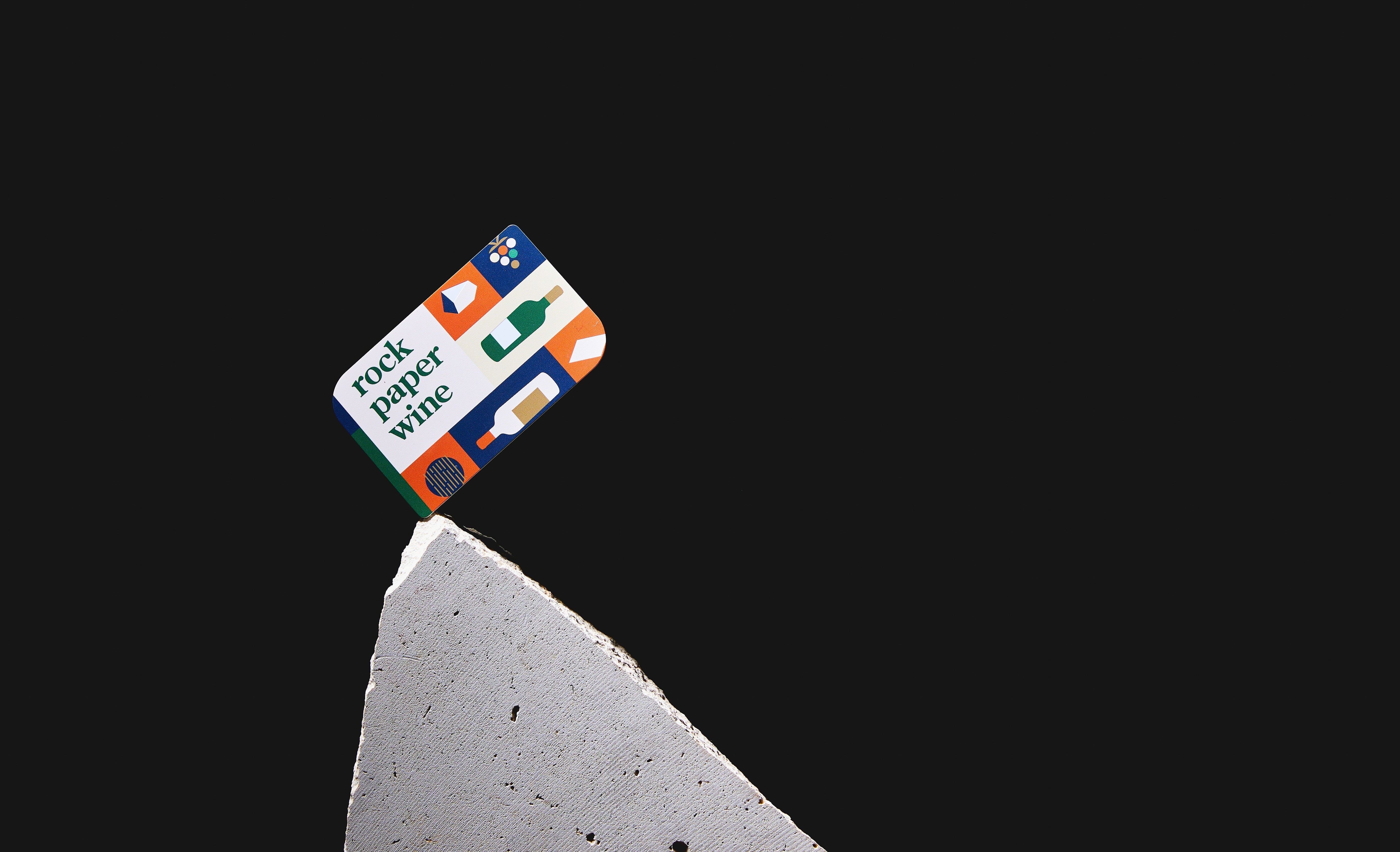Executive Summary
Introduction
The Tapt Digital Business Cards Sustainability Report outlines the remarkable environmental benefits of adopting PET business cards and promoting sustainable practices in the business community. This report delves into the key findings of utilising Tapt's custom PET cards and explores additional strategies for preserving the environment and conserving resources.
Key Findings:
-
Water Conservation: Transitioning from paper business cards to PET business cards saves approximately 5.5 litres of water per person over 5 years, with the potential to extend up to 7 years due to the longer lifespan of PET cards. This significant reduction in water consumption contributes to sustainable water management.
-
Plastic Waste Reduction: If 1 million people use Tapt custom PET cards, it would divert approximately 835,000 tonnes of plastic from going to landfill annually in Australia. This substantial decrease in plastic waste helps combat plastic pollution, including marine plastic leakage, and supports a cleaner, healthier environment.
-
Tree Preservation: By adopting PET business cards and avoiding the printing of 1000 kg of paper business cards, approximately 1,069,521 trees can be saved. This emphasises the environmental benefit of reducing paper consumption and promoting sustainable alternatives, supporting biodiversity and carbon sequestration.
Additional Points:
-
Digital Business Cards: Expanding the use of digital business cards can further contribute to environmental conservation by eliminating the need for physical card production, reducing paper usage, and minimising plastic waste. Digital alternatives represent a green approach to networking and communication.
-
Recycling for a Circular Economy: Encouraging recycling practices and utilising recycled PET materials can significantly reduce the environmental impact of plastic production and waste generation. Emphasising a circular economy approach fosters a more sustainable materials management system.
-
Recycling with Tapt: Tapt takes environmental responsibility seriously and ensures proper recycling of PET cards when returned, partnering with Terracycle. This commitment to sustainable practices helps close the loop on materials and reduces waste sent to landfills.
-
Sustainable Development Goals: Substituting traditional plastics with PET plastic aligns with sustainable development goals and environmental initiatives, promoting responsible consumption and production patterns for a greener future.
-
Reputational Impact: Businesses that adopt sustainable practices, such as using recycled materials and reducing single-use plastics, enhance their reputation and attract environmentally conscious consumers. Demonstrating corporate social responsibility becomes a competitive advantage.
-
Cost Savings: Beyond environmental benefits, utilising PET business cards offers long-term cost savings by reducing the need for frequent card reprints and associated printing expenses. Sustainable choices can be financially advantageous for businesses.
Conclusion
The adoption of PET business cards, recycling PET materials, and embracing digital alternatives present compelling solutions to conserve water, reduce plastic waste, and preserve natural resources like trees. These initiatives align with global sustainability objectives and foster a responsible, eco-friendly business landscape. Tapt remains committed to advocating sustainability and will continue to innovate in PET card production and collaborate with businesses to promote greener practices. Together, we can make a lasting positive impact on the environment and inspire others to join the journey towards a more sustainable future.
Next Steps: Tapt is dedicated to continuing its mission of promoting sustainability and environmental conservation. Going forward, we will focus on further advancements in PET card production, explore new methods to minimise plastic waste, and actively engage with businesses to raise awareness about the transformative impact of eco-friendly choices. By collectively striving for sustainability, we can safeguard the planet for future generations and foster a thriving, environmentally conscious society.
Introduction
In today's environmentally conscious world, businesses are seeking sustainable alternatives to traditional paper-based practices. This report aims to analyse and compare the environmental impact of digital business cards and Recycled PET (Polyethylene Terephthalate) one-off cards as compared to paper business cards. The evaluation will focus on carbon emissions, water usage, and sustainability statistics, providing clear data to demonstrate the benefits of these alternatives.
Carbon Emissions
1.1 Paper Business Cards: The production of paper business cards requires the harvesting of trees, transportation, and energy-intensive manufacturing processes. According to estimates, the production of one ton of paper emits approximately 1.5 metric tons of carbon dioxide (CO2) equivalent.
1.2 Digital Business Cards: Digital business cards, on the other hand, eliminate the need for paper production and associated carbon emissions. While the energy consumption of digital devices is a factor, the overall carbon footprint is considerably lower. A study conducted by the Environmental Paper Network found that digital business cards can reduce CO2 emissions by up to 90% compared to paper-based counterparts.
1.3 Recycled PET One-Off Cards: Based on a study conducted by the Plastics Industry Association (PLASTICS), the production of one ton (1,000 kilograms) of recycled PET plastic results in approximately 1.8 metric tons of CO2 equivalent emissions. This estimate accounts for the energy consumption and emissions associated with the recycling process.
It is essential to note that this value is an average estimate and can vary depending on specific factors related to the production process. The environmental impact of recycled PET cards is generally lower compared to virgin plastics, as it reduces the demand for raw materials and contributes to waste diversion from landfills.
Water Usage
2.1 Paper Business Cards: The paper production process requires substantial amounts of water. The manufacturing of one ton of paper typically consumes around 10,000 to 20,000 litres of water, leading to water scarcity and pollution.
2.2 Digital Business Cards: Digital business cards require minimal water usage, mainly for the production and maintenance of electronic devices. The water footprint associated with digital business cards is significantly lower compared to paper-based alternatives.
2.3 Recycled PET One-Off Cards: PET plastic demonstrates its environmental advantage with a lower water footprint, as it takes about 10,000 litres of water to produce 1 ton of PET plastic. PET plastic's recyclability and reusability contribute significantly to waste reduction. By encouraging the recycling and reuse of PET materials, we can effectively mitigate the environmental impact of plastic waste. Emphasising the importance of PET recycling and its potential for creating sustainable products can lead to a more eco-friendly approach compared to traditional paper consumption.
Considering the vast amounts of plastic waste generated globally, PET plastic emerges as a promising solution to minimise waste, conserve water resources, and promote a more sustainable future. By recognizing and implementing the value of PET recycling, we can take significant strides towards a cleaner and greener planet for current and future generations.
To calculate the water saved from PET plastic business cards to paper business cards, we need to consider the water footprint of each material and the frequency of replacement for PET plastic cards.
Let’s assume:
-
Water footprint of PET plastic cards: 10,000 litres to produce 1 ton of PET plastic (1 ton = 1000 kg).
-
Water footprint of paper business cards: An average of 15,000 litres to produce 1 ton of paper.
-
Replacement frequency: Each person only needs 1 PET plastic card every 5 years.
-
Now, let's recalculate the water saved:
-
Water footprint of PET plastic cards (per person per year): = 10,000 litres (1 ton of PET plastic) / 1000 kg ≈ 10 litres per kg = 10 litres/kg * 1 kg (1 PET plastic card) ≈ 10 litres per PET plastic card
-
Water footprint of paper business cards (per person per year): = 15,000 litres (1 ton of paper) / 1000 kg ≈ 15 litres per kg = 15 litres/kg * 0.3 kg (average weight of a paper business card) ≈ 4.5 litres per paper business card
-
Now, let's calculate the water saved for each person over 5 years:
-
Water saved per person (over 5 years) = Water footprint of paper business cards - Water footprint of PET plastic cards = 4.5 litres per paper business card - 10 litres per PET plastic card = -5.5 litres
The negative value indicates that using PET plastic cards results in more water savings compared to paper business cards. Even with an average of 15,000 litres of water for paper production, the replacement frequency for PET plastic cards remains much lower (1 card every 5 years) than that of paper business cards, resulting in water savings.
Therefore, if each person only needed 1 PET plastic card per 5 years, approximately 5.5 litres of water would be saved when using PET plastic cards instead of paper business cards over the same period.
Sustainability & Landfill Statistics
3.1 Recycled PET One-Off Cards: Recycled PET is a sustainable alternative for business cards. It is produced from post-consumer plastic bottles, reducing the demand for virgin plastics and diverting waste from landfills. By utilising recycled PET, businesses contribute to the circular economy and reduce the extraction of finite resources.
3.2 Digital Business Cards: Digital business cards are highly sustainable as they eliminate the need for physical production and waste generation. They can be easily updated and shared digitally, reducing the consumption of resources over time.
3.3 Data reveals a staggering annual production of over 10 billion business cards, yet a concerning 88% of these cards end up discarded, contributing to waste and environmental impact.
3.4 How much plastic is diverted from landfill when we use PET plastic cards instead of sending it to landfill as single-use plastic.
Given the statistics for Australia's annual plastic consumption:
-
One million tonnes of Australia's annual plastic consumption is single-use plastic.
-
84% of plastic is sent to landfill.
-
Only 13% of plastic is recycled.
-
Approximately 130,000 tonnes of plastic leaks into the marine environment every year in Australia.
-
We'll use the assumption that each person needs 1 recycled PET plastic card every 5 years, and the weight of each card is approximately 5 grams (0.005 kg).
-
Calculate the total amount of single-use plastic sent to landfill in Australia every year:
Total single-use plastic sent to landfill (annually) = 1,000,000 tonnes * 0.84 (84% sent to landfill) = 840,000 tonnes -
Calculate the total amount of plastic recycled in Australia every year:
Total plastic recycled (annually) = 1,000,000 tonnes * 0.13 (13% recycled) = 130,000 tonnes -
Calculate the amount of plastic saved from going to landfill due to PET plastic card reuse:
-
Plastic saved from going to landfill = Total single-use plastic sent to landfill - (Recycled PET plastic used for cards * Number of cards used)
-
Plastic saved from going to landfill = 840,000 tonnes - (0.005 kg * Number of cards used)
-
To find the number of cards used, we need to know how many people are using PET plastic cards instead of single-use plastic. For this calculation, let's assume 1 million people are using PET plastic cards (corresponding to the total annual plastic consumption in Australia):
-
Number of cards used = 1,000,000 people * (1 card per person every 5 years) = 1,000,000 cards
-
Now, we can calculate the plastic saved from going to landfill:
-
Plastic saved from going to landfill = 840,000 tonnes - (0.005 kg/card * 1,000,000 cards)
-
Plastic saved from going to landfill = 840,000 tonnes - 5,000 tonnes
-
Plastic saved from going to landfill ≈ 835,000 tonnes
Using PET plastic cards instead of single-use plastic can divert approximately 835,000 tonnes of plastic from going to landfill annually in Australia. This substantial reduction in plastic waste going to landfills can have a positive impact on the environment, reducing the risk of plastic pollution and its harmful effects, such as plastic leakage into the marine environment.
Additional Considerations
4.1 Durability and Lifespan: Digital business cards and Recycled PET one-off cards have longer lifespans compared to paper business cards, which often end up discarded after a short period of time. The longevity of these alternatives contributes to resource conservation.
4.2 Waste Generation and Disposal: Paper business cards contribute to waste generation, requiring proper disposal or recycling. In contrast, digital business cards and Recycled PET cards significantly reduce waste generation, making them more environmentally friendly.
The paper business card waste refers to the discarded or unused paper business cards that are thrown away after being printed or distributed. A significant portion of paper business cards ends up as waste. This waste contributes to the environmental burden through increased paper consumption, resource depletion, and the generation of unnecessary waste in landfills or incineration facilities. Emphasising more sustainable alternatives, such as digital business cards or recycled PET one-off cards, can help mitigate paper business card waste and promote eco-friendly practices.
4.3 To calculate the number of trees saved, we need to determine the amount of paper used to produce 1000 kg of paper business cards and then calculate how many trees would be required to produce that amount of paper.
-
The total volume of paper used for 1000 kg of paper business cards:
-
Volume = weight / density
-
Since 1 kg is equal to 1 litre in volume, and the density of paper can be assumed to be around 0.001 g/cm³ (or 1 kg/dm³), we can calculate the volume in litres: Volume of paper = 1000 kg ≈ 1000 litres
-
Find the area of the paper used in the business cards.
-
Thickness of each card = 0.014 inches ≈ 0.03556 cm
-
Let's assume the dimensions of the card are 8.5 inches x 5.5 inches, which is a standard business card size.
-
Area of each card = length x width Area of each card = 8.5 inches x 5.5 inches ≈ 46.75 cm²
-
Let’s calculate how many business cards can be made from 1000 litres of paper:
-
Number of cards = Volume of paper (litres) / Volume of each card (litres)
-
Number of cards = 1000 litres / 46.75 cm² ≈ 21.39 cards
-
Since we want to know the number of cards in metric tons, we need to convert the volume to cm³ per metric ton:
-
Volume in cm³/mt = Volume in litres x 1,000,000 (since 1 litre = 1,000 cm³)
-
Volume in cm³/mt = 1000 litres x 1,000,000 = 1,000,000,000 cm³/mt
-
Now, we can calculate how many cards can be made from 1 metric ton of paper:
-
Number of cards per metric ton = Volume in cm³/mt / Volume of each card in cm²
-
Number of cards per metric ton = 1,000,000,000 cm³/mt / 46.75 cm² ≈ 21,390,428 cards/mt
-
Finally, we can determine how many trees would be saved:
-
Number of trees saved = Number of cards per metric ton / 20 (since 20 reams are made from one tree)
-
Number of trees saved ≈ 21,390,428 cards/mt / 20 ≈ 1,069,521 trees/mt
Approximately 1,069,521 trees would be saved if we stopped printing 1000 kg of paper business cards, assuming each card averages 300 GSM and 0.014 inches thick, and keeping the units in litres per square centimetre per metric ton.
Conclusion
The analysis demonstrates that digital business cards and Recycled PET one-off cards offer significant environmental benefits compared to traditional paper business cards. They contribute to carbon emission reduction, conserve water resources, and promote sustainability through the use of recycled materials.
These alternatives align with the principles of a circular economy and provide businesses with environmentally responsible choices for networking and branding. Considering the clear advantages of digital and Recycled PET alternatives, their adoption can help mitigate the environmental impact associated with traditional paper business cards.



Unlocking the Power of NFC Cards in Modern Networking
Why Smart Business Cards Are a Must-Have for Real Estate Agents in 2025